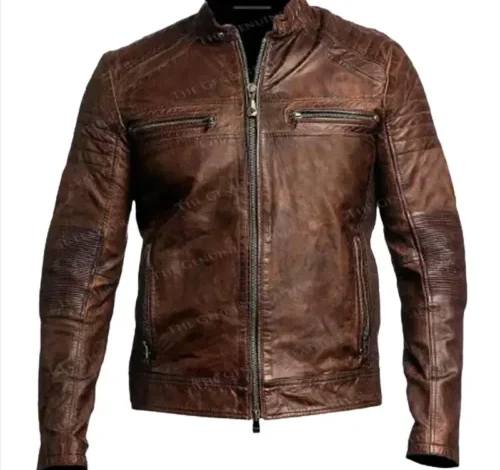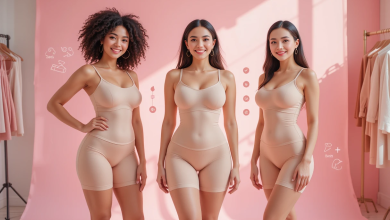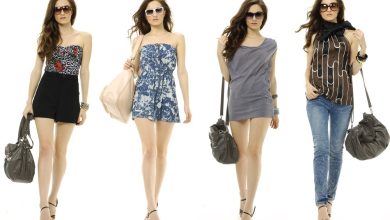The Evolution of Fashion: A Journey Through Time, Culture, and Innovation

Fashion is more Cafe Racer Jacket Men than just clothing—it’s an expression of identity, culture, and artistry. Throughout history, fashion has evolved, influenced by economic, social, and technological changes. From the extravagant gowns of the 18th century to the streetwear trends of the 21st century, fashion serves as a reflection of the times and a medium for personal expression.
A Brief History of Fashion
Fashion, as we understand it today, has roots in ancient civilizations. In ancient Egypt, for example, clothing signified status and power. The pharaohs wore elaborate garments and accessories made from precious materials like linen and gold, showcasing their wealth and divine status. Similarly, in ancient Greece and Rome, clothing was a symbol of social hierarchy, with the toga representing a Roman citizen’s status.
However, it wasn’t until the Middle Ages and the Renaissance that fashion became more intricately tied to individual style and aesthetics. During these periods, the upper classes showcased their wealth through ornate garments made from rich fabrics like silk, velvet, and furs. The Renaissance, in particular, saw a focus on more intricate tailoring, elaborate patterns, and the rise of tailoring as a profession.
The Birth of Haute Couture
The 19th century marked a turning point in fashion with the establishment of haute couture, or “high sewing.” French fashion designer Charles Frederick Worth is credited with founding haute couture in Paris during the mid-1800s, making it the center of global fashion. Worth’s designs were custom-made for individual clients, and his work set the stage for what would become the fashion industry as we know it today.
Haute couture is characterized by luxury, intricate craftsmanship, and high-quality materials. Parisian houses such as Chanel, Dior, and Louis Vuitton further solidified Paris’s status as the fashion capital of the world in the early 20th century, creating iconic designs that still influence fashion trends today.
The Impact of World Wars and the Changing Role of Women
The two World Wars dramatically impacted fashion. During World War I, clothing became more practical as women entered the workforce in greater numbers. The iconic “flapper” style of the 1920s reflected this shift, with shorter skirts, bobbed hair, and looser, more functional clothing.
World War II furthered this change, as rationing led to a focus on practicality and resourcefulness in fashion. Designers like Christian Dior introduced the “New Look” in 1947, characterized by full skirts and cinched waists, celebrating femininity in a post-war world.
The 1960s and 1970s ushered in even more radical changes, with youth subcultures like mods and hippies leading the way in rejecting traditional fashion norms. The rise of punk fashion in the late 1970s—characterized by leather jackets, band t-shirts, and DIY clothing—challenged the establishment and made fashion a symbol of rebellion.
Fashion in the Modern Era: Trends and Sustainability
The late 20th and early 21st centuries have been marked by rapid change in fashion. The rise of fast fashion—cheap, mass-produced clothing intended to mirror the latest trends—has transformed how clothes are made and consumed. Brands like Zara, H&M, and Uniqlo have revolutionized the industry, offering the latest styles at an affordable price.
However, this rapid pace of production has raised concerns about environmental sustainability and labor conditions in the fashion industry. In response, a new movement called sustainable fashion has emerged. Designers and brands are now focusing on eco-friendly materials, ethical labor practices, and longer-lasting clothing. Circular fashion, which emphasizes recycling and reusing materials, is gaining traction as a way to reduce waste in the fashion industry.
Fashion in the 21st century is also defined by diversity and inclusivity. The body positivity movement has reshaped the idea of beauty and how clothing should fit all body types. High fashion brands and influencers are embracing more diverse models, and brands like Savage x Fenty by Rihanna have revolutionized the lingerie market by offering sizes for a broader range of body shapes.
Fashion as a Global Language
Today, fashion transcends geographical and cultural boundaries. Streetwear, for instance, is no longer confined to urban youth culture but has become a global phenomenon, with brands like Supreme and Off-White becoming internationally recognized. Additionally, social media platforms like Instagram and TikTok allow individuals to share their personal style with millions, making fashion more accessible and democratized.
The digital era has also seen the rise of virtual fashion, where clothing is designed and worn in digital spaces, such as video games and social media platforms. Designers are creating digital garments that users can wear in their avatars, marking a new frontier in fashion innovation.
Fashion’s Future: Innovation and Artificial Intelligence
As we look toward the future, the intersection of technology and fashion promises exciting possibilities. Artificial intelligence (AI) is already being used to predict trends, streamline production, and create personalized shopping experiences. Designers are experimenting with 3D printing and wearable tech, creating garments that are not only stylish but also functional. Smart clothing, embedded with sensors that monitor health, temperature, and more, is poised to revolutionize the way we think about clothing.
Fashion’s future is likely to be shaped by both technology and the continuing shift toward sustainability. The growing focus on ethical practices and eco-friendly design is pushing the industry to reconsider its impact on the planet. From sustainable fabrics to zero-waste designs, the next era of fashion may be defined by a blend of innovation, creativity, and responsibility.
Conclusion: Fashion’s Timeless Influence
Fashion has always been a reflection of society and culture, evolving in response to changing times, technologies, and values. From the opulence of the past to the sustainable and inclusive fashion of the future, fashion remains an integral part of human expression. It is not merely about clothes, but about identity, power, creativity, and art. As fashion continues to evolve, it will undoubtedly reflect the world’s hopes, challenges, and transformations for years to come.




